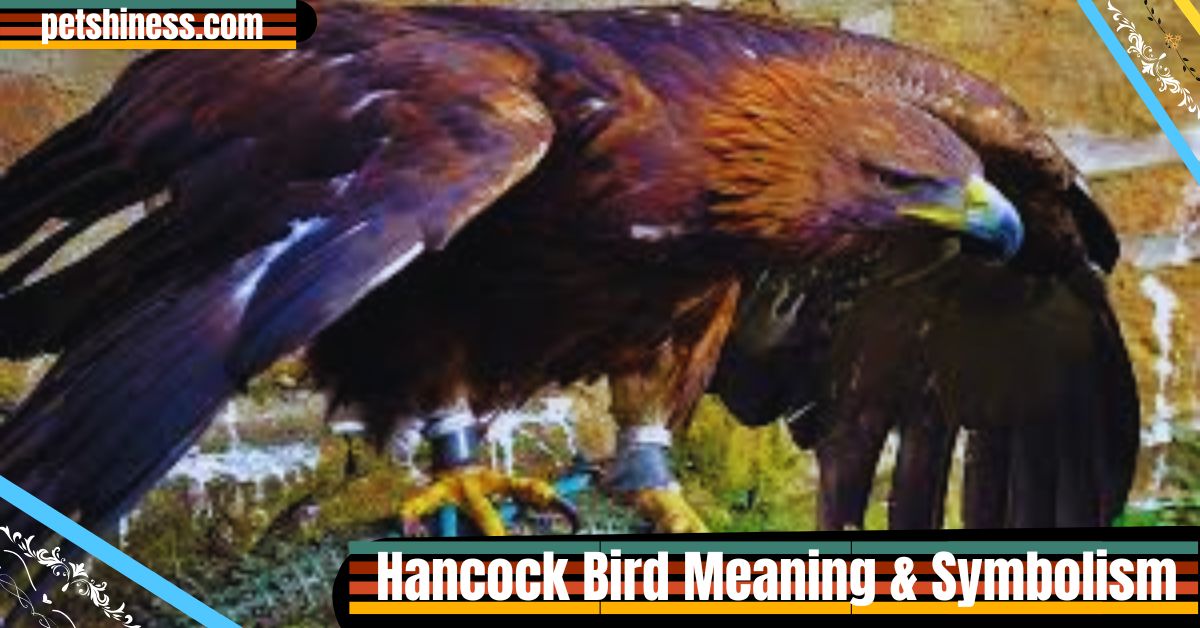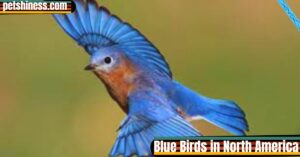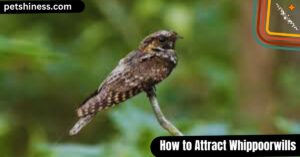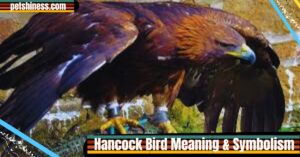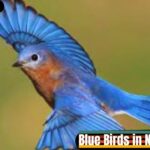The Hancock Bird Meaning & Symbolism holds a special place in the world of bird symbolism. Known for its unique beauty, this bird fascinates nature enthusiasts and storytellers alike. Many believe the Hancock Bird represents freedom, exploration, and mystery. Its role in folklore and natural history has made it a symbol of wonder and inspiration.
This remarkable bird species often appears in tales of mythical creatures. Such stories highlight its role in promoting creativity and imagination. Its presence sparks interest in birdwatching and encourages people to appreciate the beauty of the natural world.
With a strong historical background, the Hancock Bird has influenced human culture. Its physical characteristics are often described in detail in ancient texts. These features make it stand out among other rare birds.
In bird folklore, the Hancock Bird often symbolizes hope and renewal. Many cultures celebrate its connection to exploration themes and the unknown. This has made it a subject of interest for those studying bird legends.
The cultural impact of the Hancock Bird continues to grow. Its importance as a freedom symbol resonates with people worldwide. These themes highlight its enduring relevance.
For natural history lovers, the Hancock Bird remains a key focus. It bridges the gap between mythical bird species and real-world inspiration.
Historical Background and Origins
The Hancock Bird has a rich historical background and deep connections to folklore. People have told stories about this bird for many generations. The bird’s significance is rooted in ancient times, where it appeared in many historical references and myths.
In natural history, the Hancock Bird is often linked with various avian species that are both rare and mysterious. Its origins can be traced to regional legends that have been passed down through oral tradition. These stories tell of the bird’s powers and its role in the natural world.
The bird is also tied to ancient symbolism. In many cultures, it represented ideas of freedom and exploration. This bird’s presence in storytelling showed how people connected nature to their everyday lives. Cultural memory helped preserve these legends for future generations.
As a mythical creature, the Hancock Bird often appeared in avian mythology. Its role in bird symbolism in history showed how it was valued for its mystery and beauty. This made it a subject of fascination in many cultures.
The bird’s avian behaviors were also important. People noticed how it interacted with the environment, and these observations were linked to its symbolic meaning. For example, its flight patterns were seen as a metaphor for freedom.
In regional bird myths, the Hancock Bird was often seen as a guide for travelers. Its appearance signified new journeys and discoveries. These bird legends and myths have shaped the way people view birds in different parts of the world.
The Hancock Bird historical context is key to understanding its role in various cultures. Its cultural values were celebrated in songs, dances, and rituals.
Throughout history, the bird has been a symbol of connection between the earthly and spiritual worlds. This cultural significance of birds continues to inspire people today.
The story of the Hancock Bird remains alive in mythical birds in culture. Its enduring presence shows how powerful historical bird symbolism can be across generations.
Physical Characteristics and Habitat
The Hancock Bird is known for its unique physical characteristics that make it stand out among other birds. It has a special feather pattern with beautiful, vibrant colors that are rare in most birds. This rare coloration is often seen as a symbol of freedom and protection, tying it to themes of wisdom and strength in various cultures. These features have made the bird a subject of fascination for birdwatchers and nature enthusiasts.
One of the most striking things about the Hancock Bird is its elegant wings. The wings are wide and strong, allowing it to soar high in the sky. This bird is often associated with mythical creatures because of its grace and powerful flight. It represents the idea of freedom, moving through the air with ease and beauty.
The habitat of the Hancock Bird is just as special as its appearance. It is found in serene landscapes, often high in the mountains or deep within misty forests. These environments add to its mystical bird habitats, making it a symbol of the unexplored and the unknown. The expansive skies above these habitats represent the bird’s connection to freedom and openness.
Hancock Bird habitats are often untouched by humans, allowing the bird to live peacefully. These places also have cultural importance. Many cultural historians believe that the bird’s habitat reflects the ideal balance between nature and human life.
The bird’s features and habitats inspire many people. Its beauty and rare avian species traits make it a symbol of strength, wisdom, and mystery. People continue to be fascinated by its cultural significance and the symbolic meaning it carries.
- Hancock Bird features include vibrant, rare feather colors and wide wings.
- It thrives in mystical bird habitats like misty forests and high mountains.
- The bird is associated with freedom and protection in bird symbolism.
- Its avian elegance and unique feather patterns attract birdwatching fascination.
Symbolism and Cultural Significance
The Hancock Bird holds deep symbolic meanings in various cultures. It is often seen as a symbol of wisdom and freedom. Many people believe that the bird represents the balance between the earth and sky. Its flight across the skies shows the connection between the physical and spiritual worlds, symbolizing personal freedom and the endless possibility to explore.
In folklore, the Hancock Bird is seen as a guide. It helps people find clarity in difficult times and provides guidance. The bird’s ability to soar high above the earth represents its role in offering protection and vision. In many cultures, it is thought to help people achieve their goals by showing them the way forward. This powerful symbolism has made it a figure of great importance in different beliefs.
The bird is also connected to resilience. It shows how, like the bird, people can overcome challenges and transform their lives. The Hancock Bird teaches that even in difficult times, one can rise and find a new perspective. Its presence is often seen as a symbol of transformation and strength. Many cultures have stories that highlight how the bird helps people grow and develop.
The cultural significance of birds is vast, and the Hancock Bird plays a major role in this. In art, the bird is often seen as a muse for artists and writers. Its beauty and symbolism have inspired works that celebrate freedom, transformation, and resilience. This bird encourages people to think deeply about life and nature, making it a powerful influence in the creative world.
The Hancock Bird also represents the human spirit. It embodies the strength to continue moving forward, no matter what obstacles are in the way. It is a reminder that freedom and wisdom are not just about physical space but also about mental and spiritual growth.
- Hancock Bird spiritual meaning represents wisdom and freedom.
- It is seen as a guide in folklore, offering protection and vision.
- The bird symbolizes resilience and transformation in nature.
- The bird has a lasting artistic influence, inspiring writers and artists.
The Hancock Bird in Modern Context
The Hancock Bird continues to hold important symbolic meanings in modern culture. It has found a place in various forms of art and literature. This bird is often used as a symbol of personal freedom and resilience, which resonate with many people today. Its ability to soar high above the world makes it a perfect metaphor for the human desire to explore and grow.
In modern art, the Hancock Bird is frequently depicted as a symbol of self-discovery. Modern artists often use its image to represent the freedom of thought and creativity. The bird’s graceful flight is seen as a reflection of the desire to break free from limitations and embrace new possibilities. Its presence in literature also highlights themes of freedom and exploration, inspiring stories that encourage readers to seek personal growth.
The Hancock Bird is also significant in education and environmental movements. Many people today look to the bird as a symbol of biodiversity and the importance of protecting avian habitats. As ecological awareness grows, the Hancock Bird serves as a reminder of the need for conservation and preservation of natural spaces. It is closely tied to the idea that protecting wildlife and their habitats is essential for maintaining the balance of nature.
In the context of modern environmental awareness, the Hancock Bird represents the urgency of biodiversity protection. Its image is often used in campaigns and efforts focused on avian habitat preservation and wildlife protection. This helps raise awareness about the need to protect the environment and encourages people to adopt ecological mindfulness in their daily lives.
The Hancock Bird also reflects how ancient beliefs can be adapted to contemporary values. Its symbolism has remained strong throughout history and continues to inspire people in today’s world. Whether through art, literature, or environmental efforts, the bird plays a key role in conveying messages of freedom, resilience, and the importance of preserving nature.
Conservation Status and Environmental Impact
The Hancock Bird is an important part of our natural world, but its conservation status is a concern. This bird, like many others, faces threats from human activities that harm its habitats. Climate change and industrial development have led to the destruction of many areas where the bird once thrived. As a result, the bird’s population has decreased, and it has become an important focus for conservation organizations.
One of the biggest challenges the Hancock Bird faces is the loss of its natural habitats. These areas are crucial for the bird’s survival. When habitats are damaged or destroyed by human activities, the birds lose their homes and food sources. This leads to a decline in their population. Biodiversity is also affected, as the loss of one species can disrupt the entire ecosystem.
Despite these challenges, nature’s resilience gives hope. Many conservation efforts are underway to protect the Hancock Bird and its habitat. Conservation organizations are working hard to restore natural habitats and protect the species. They focus on habitat preservation initiatives and creating safe spaces for birds to live and breed. These efforts are essential in ensuring the survival of the Hancock Bird.
Research and monitoring are also important tools in understanding the bird’s needs. By tracking the bird population and studying how it interacts with its environment, scientists can create better strategies for avian species protection. Public awareness campaigns also help educate people about the importance of protecting birds and their ecosystems.
The Hancock Bird plays an essential ecological role. It helps maintain the balance of the ecosystem, and its decline could affect many other species. This is why it is so important to protect this bird and other endangered species.
- Climate change and industrial development harm avian habitats.
- Conservation organizations work on habitat preservation and species protection.
- Research and monitoring help guide conservation efforts and increase public awareness.
Conclusion
The Hancock Bird holds deep meaning and symbolism in both the natural world and human culture. It represents freedom, wisdom, and resilience, inspiring people through its beauty and grace. The bird’s presence in folklore and art reflects its importance as a symbol of strength and guidance. However, the Hancock Bird faces challenges due to habitat loss, climate change, and human activities.
Its conservation status calls for efforts to protect its habitats and ensure its survival. By raising public awareness and supporting conservation initiatives, we can help preserve the Hancock Bird and maintain the balance of our ecosystems. Its symbolic meaning continues to remind us of the need for environmental responsibility and protection.
Read Also :
Millipede Spiritual Meaning: Uncover Its Deep Significance
Dead Rabbit: A Surprising Symbol of Hidden Meanings
Blue Jay Feather Meaning: Unlocking Its Spiritual Symbolism

Jerry John ensures petshiness.com runs smoothly and securely. With a passion for tech and a focus on user experience, Jerry manages the site to deliver top-notch content and functionality.
